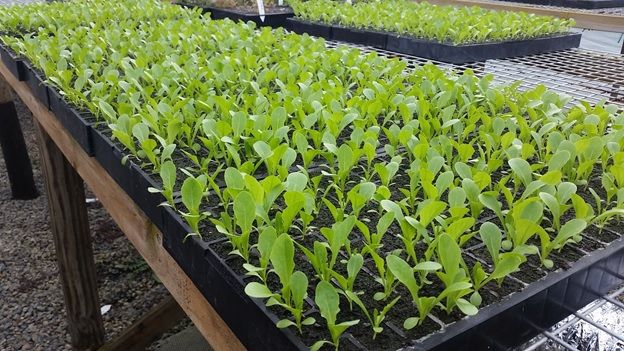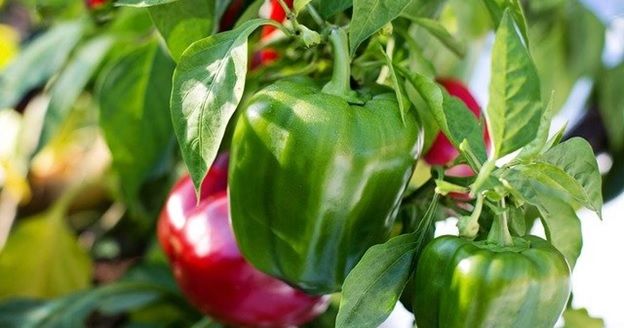

capsicum plants
Are you interested in greenhouse farming? Have you recently built a greenhouse in your backyard? If so, investing in the right farming supplies should be your top priority.
Plant growth can be successful only by selecting appropriate seedling containers, grow bags, humidity domes, and other indispensable greenhouse supplies. Seedling containers and grow bags allow gardeners to cultivate crops of various types and sizes, while humidity domes ensure moisture is optimal during the germination phase.
The guide below will introduce you to the uses and features of the essential greenhouse farming supplies.
Seedling containers
In order for individuals to be successful at greenhouse farming, they have to use seedling containers. There is a variety of such containers in the form of seedling cells and trays, jiffy pellets, and cone-tainers. The choice of gardeners should depend on the quantity and size of plants they intend to grow.
For instance, seedling cells provide maximum plant quantity, as plenty of crops can be planted into a tiny space with little soil. These cells are placed on a tray in order for individuals to move them safely and prevent excess water from evaporating. Gardeners prefer seedling trays due to the low initial cost, which helps them implement the containers in their greenhouses without worrying about their budget. Go here to learn how to plant seeds in a basic seed tray.
Additionally, cell trays come in various sizes, depending on the type of crops one plans to cultivate. For example, 32-cell trays provide the largest space for seedlings to thrive, as well as convenient transplantation. Due to the large amount of space, plants tend to grow quickly while accessing nutrients without any obstacles. These containers are the best option for growing crops susceptible to transplant shocks, such as pumpkins, melons, and cucumbers.
In contrast, 72-cell trays provide an excellent balance between growing space and the number of seedlings per cell. The size and depth of the cells make them convenient for the cultivations of various crops, even vine plants. These are recommended for greenhouse farmers planning to grow cauliflower, cabbage, broccoli, kale, Brussel sprouts, peppers, and vine crops. Nevertheless, when transplanting vine crops, the process should be performed earlier than gardeners would usually do with 32-cell models.
Moreover, 128-cell trays are a perfect option for greenhouse farmers whose intention is to grow a large number of plants. These are suitable for the cultivation of collards, Brussel sprouts, kale, mustard, cabbage, cauliflower, tomatoes, peppers, etc. Conversely, 200-cell trays are appropriate for growing lettuce, Cole crops, as well as flowers.

greenhouse farming
Jiffy pellets are another popular container type used for greenhouse farming. There is a multitude of greenhouse product reviews, such as https://gardeningwithconfidence.com/blog/bootstrap-farmer-review/, helping farmers in selecting seed starting supplies and greenhouse accessories. Jiffy pellets, made of peat moss, expand when coming in contact with water. These containers already have the necessary nutrients, which makes them ideal for beginner gardeners.
Cone-tainers are a sought-after type of seedling container for gardeners interested in planting tree seedlings. Therefore, these are designed to be deep and narrow, excellent for growing onions and leaks.
Grow bags
Grow bags have increased in popularity, becoming even more famous than plastic pots. These supplies are not only eco-friendly but also practical and budget friendly. Greenhouse farmers are required to consider multiple factors when choosing high-quality grow bags.
In addition, the material should be selected with the utmost attention in order to allow optimal air penetration. In order for the air to enter the bag, the fabric has to be breathable. Only by ensuring proper airflow, the seedlings will be provided with a chance for proper growth. Naturally, the materials of grow bags need to be resistant to tears given the weight of soil and crops.
Besides the material, size is of crucial importance when selecting grow bags. It usually depends on the height of plants, as tall plants are best planted in deep bags. Deep models, however, wouldn’t be suitable for small crops, as a large amount of water and nutrients will go to waste.
Another feature to have in mind when shopping for grow bags is washability. The material of these containers should be convenient in terms of washing because of the messy nature of the soil. If choosing such bags in light colors, the risk of looking messy is quite high. Therefore, make sure to either choose containers in dark colors or made from washable materials.
Furthermore, good drainage is essential for preventing mold and drowning. The fabric has to perform the draining process effectively since seedlings require more watering. The soil is prone to drying fast, which is why good drainage is crucial. Make sure the models you buy come with stitched handles in order for you to be able to move them around the greenhouse.
Humidity domes
Humidity domes are among the most important greenhouse tools, essential in the course of seed germination. Their job is to protect the seeds by maintaining optimal moisture levels until the process of germination commences. These are left on top of trays till the moment the first sprouts appear after which they are removed, and seeds are exposed to light.
While seed germination lasts, the seeds have to be provided with sufficient moisture in order to turn into sprouts. By using humidity domes, gardeners are exempted from the task of watering the seedlings regularly. Nevertheless, unless removed on time, humidity domes might trigger mold.
To be on the safe side, make sure to invest in humidity domes with vents, which ensure proper airflow throughout the germination phase. These tools should be cleaned regularly in case traces of mold have been left on the domes. Additionally, the humidity levels inside your greenhouse should be no higher than seventy percent. Humidity domes are also believed to be effective in preventing pests from destroying your seedlings.
The bottom line
Being a greenhouse farmer is a demanding hobby.
Purchase the necessary supplies to enjoy your hobby and grow the crops you have always wished for!

